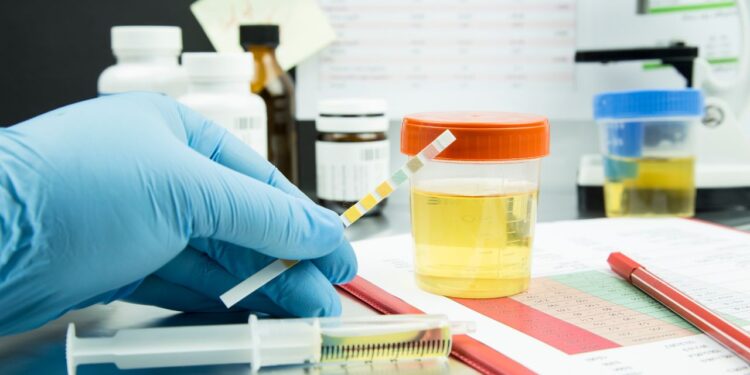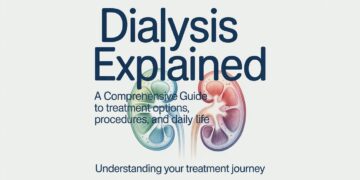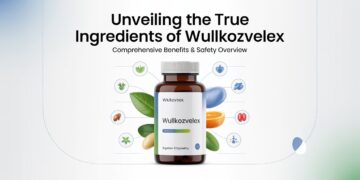Drug testing is an essential part of the hiring process. It helps to prevent on-the-job accidents and injuries, decreases absenteeism, controls workers’ compensation claims, and boosts employee morale.
Pre-employment drug screenings typically involve a urine sample. However, saliva and blood tests are also available. Most employers opt for the urinalysis test, which is federally mandated and can detect traces of many drugs even after the effects have worn off.
Decreases Absenteeism
An estimated $276 billion is spent by businesses each year on lost productivity, increased health care costs, absenteeism, workers’ compensation claims, and legal liability issues due to substance abuse in the workplace. Investing in pre-employment and routine drug screening can significantly decrease these costs.
A urine test can detect many types of drugs and help employers identify potential problems before they become serious. Generally, urine testing includes a series of samples collected and analyzed at a laboratory facility. The most common substances to be tested for include alcohol, amphetamines, cocaine, and marijuana.
Employers can also choose to screen current employees on a random basis or probable cause. Probable cause testing is done when a supervisor observes behavior that indicates possible drug or alcohol use in violation of company policy. This type of testing is often accompanied by a written statement detailing the specific reasons for the suspicion. If the fear is justified, a supervisor can request an employee take a urine test. This can be done without the employee having to miss work.
Decreases Workers’ Compensation Claims
Employees who are under the influence of drugs or alcohol miss work at a higher rate than their drug-free counterparts. According to a study published in the journal Occupational Health & Safety, employees who are under the influence miss an average of 24.6 days per year — that’s excluding vacation and sick days. Drug abuse also leads to decreased productivity, as employees who are under the influence will likely spend time focusing on their problems or dealing with hangovers.
In addition to conducting a pre employment drug test on job candidates, employers can also conduct random drug tests for current employees. This type of testing is often required for employees in safety-sensitive industries or where federal and state regulations dictate such a test.
Typically, a urinalysis is the most common drug screening test employers conduct. However, hair and saliva samples can also be used. Typical drugs that are tested for include marijuana, cocaine, amphetamines/methamphetamines, and phencyclidine (PCP). Some companies also use breathalyzers to screen for alcohol consumption. Additionally, a urine test will detect traces of illegal drugs in the system even after the effects have worn off.
Decreases Legal Liability
Drug abuse has several adverse effects on workplace productivity and morale. It leads to absenteeism, higher turnover rates, and an increased likelihood of workplace accidents and workers’ compensation claims. Employers can mitigate these effects by screening potential hires for drugs before hiring them.
Drug testing involves collecting biological samples for chemical analysis. Generally, these samples are urine or sweat, hair, and saliva (oral fluid) samples. These samples are analyzed for the presence of various drugs and alcohol in a person’s system. These tests typically look for metabolites of illicit substances such as cocaine, marijuana, and heroin. They also may detect the presence of prescription medications that have been abused or used illegally.
Some companies use blanket drug testing, meaning everyone is tested regularly. This is often less intrusive than pre-employment screening and includes current employees. Those who refuse to participate in the company’s testing programs can be disciplined according to company policies, which can include termination. Probable cause or reasonable suspicion testing can be performed for employees in situations where supervisors notice sure signs and behaviors that indicate drug or alcohol abuse.
Decreases Turnover Rates
Drug abuse is responsible for several workplace issues, including absenteeism and poor performance. Studies show that full-time employees who use illegal drugs are more likely to have work-related accidents, file workers’ compensation claims, and lower morale than their drug-free counterparts. These negative impacts result in lost productivity. Using a pre-employment drug testing program helps prevent these problems by communicating to new hires that the company does not tolerate substance abuse.
One study found that employers who attended to applicants’ drug test results selected, on average, more productive workers than if they did not. However, this finding must be viewed cautiously because the sample size was limited, and the authors discarded some applicant subgroups on arbitrary grounds. This limits generalizability and biases parameter estimates.
Another study found that after some time, drug-positive workers had higher absenteeism and turnover rates than those who tested negative. However, the researchers did not evaluate the impact of a drug-testing policy on these variables, and it was unclear whether the observed difference was caused by the drug-testing policies or some other factor.
Decreases Employee Morale
Drug testing helps companies show their employees that they are serious about safety. This can improve employee morale and help employees feel more comfortable with the company. Many companies that implement drug testing claim they also see an improvement in overall job performance and productivity.
The most common type of drug testing is preemployment screening. This is performed after an interview, and a conditional job offer has been made before a candidate starts work. Typically, this is done in response to direct observation of erratic behavior or the presence of drugs or related paraphernalia. Managers must be trained to recognize the signs of possible drug abuse, as well as what can trigger reasonable suspicion.
Although a large number of studies have been conducted on the effectiveness of pre-employment drug testing. Very few have attempted to estimate its predictive validity. Test results were kept confidential and did not impact hiring decisions; however, outcome measures were obtained from the individual’s personnel records at four different time points.
Read more exciting articles on Tech new master



















